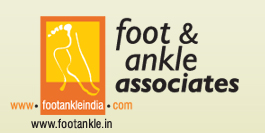| |
3 out of 4 Indians experience
serious foot problems in their lifetime. |
| |
The foot contains 26 bones, 33 joints,
107 ligaments and 19 muscles. |
| |
1/4 of all the bones in the human body
are down in your feet. When these bones are out of alignment,
so is the rest of the body. |
| |
Only a small percentage of the population
is born with foot problems. |
| |
It&##39;s neglect and a lack of awareness of
proper care, including poorly fitting shoes, that bring on
problems. |
| |
Women have about four times as many foot
problems as men. High heels are partly to blame. |
| |
Walking is the best exercise
for your feet. It also contributes to your general health
by improving circulation, contributing to weight control and
promoting all-around well being. |
| |
Your feet mirror your general health.
Conditions such as arthritis, diabetes, nerve and circulatory
disorders can show their initial symptoms in the feet, so
foot ailments can be your first sign of more serious medical
problems. |
| |
For about 7 million Indians, arthritis
is the number one cause of disability. It limits everyday
dressing, climbing stairs, getting in and out of bed or walking. |
| |
About 60-70% of people with diabetes have
mild to severe forms of diabetic nerve damage, which in severe
forms can lead to lower limb amputations. Approximately 56,000
people a year lose their foot or leg to diabetes. |
| |
There are 250,000 sweat glands in a pair
of feet. Sweat glands in the feet excrete as much as a half-pint
of moisture a day. |
| |
Walking barefoot can cause plantar warts.
The virus enters through a cut. |
| |
The two feet may be different sizes. Buy
shoes for the larger one. |
| |
About 10% of Indians have toenail problems
in a given year. |
| |
The average person takes 8,000 to 10,000
steps a day, which adds up to about 115,000 miles over a lifetime. |
|
There are currently more websites on the
Internet having to do with foot fetishes than with foot health. |






